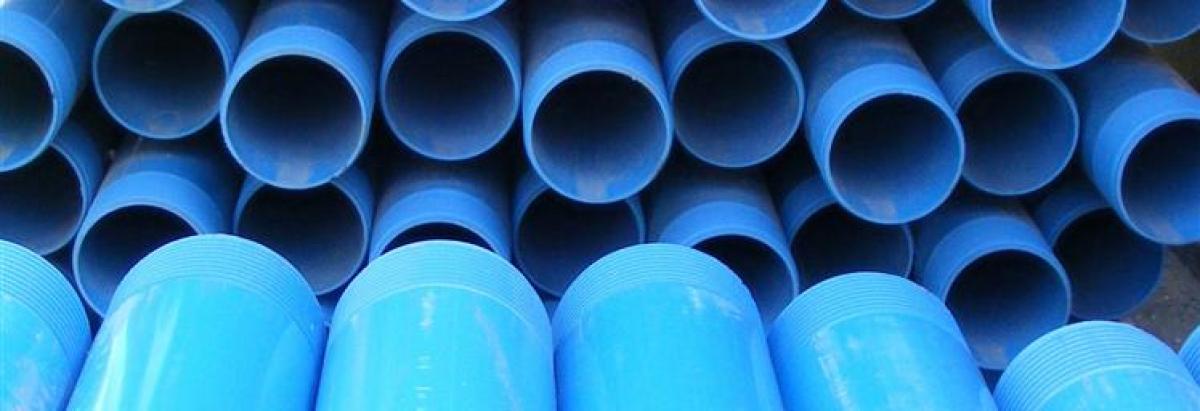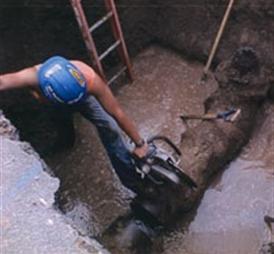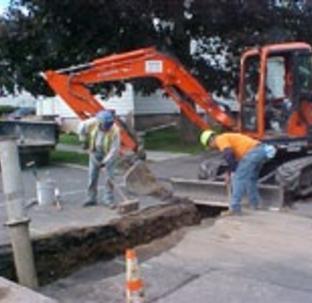

The Department of Public Works maintains over 100 miles of water line, which range from 4 inches to 24 inches in size and approximately 480 fire hydrants. The water supply originates from Canandaigua Lake and travels through transmission lines to the Water Treatment Plant in Shortsville, NY, then to the reservoir on Allerton Hill and the standpipe on South Hill. From those locations underground distribution lines carry the water to individual services to your home or business where it is metered, and subsequently billed to the water customer.
The water service from the main to curb box is the Village's responsibility, while the homeowner is responsible from the curb box to the meter (Village owns the meter). If a water service develops a leak due to age, the Village will replace at no cost to the homeowner. However, should the homeowner request that service be replaced or if said homeowner has caused a leak (i.e. causing leak due to digging), the Village will make repairs and charge for time and materials. The Village will provide a 3/4 inch water service tap for $1,150 inside of the Village and for $2,185 for a 3/4 inch water tap service outside of the Village. The homeowner is responsible for the installation of the water service from the tap into the residence.
Please note the following in regard to the water system (A complete list can be viewed in Chapter 164 of the Cod of the Village of Newark):
-
No person but the superintendent or his/her designee shall turn on or off the water to any premises
-
No person shall uncover, make any connections to, use, alter, or disturb any portion of the water system or any water service pipes or fixtures between the curb stop and the meter without approval
-
No person shall cover, obstruct or otherwise disturb a curb box so that it is not easily accessible
-
Whenever possible, meters shall be set in a basement or utility room. The Board may require that meters that cannot be sufficiently housed in a basement or utility area, such as an oversized meter, are set in a specially designated outside pit Where a meter would otherwise be located more than 100 feet from the curb box, a meter pit may be required. Meter pit size shall conform to the construction specifications, and, further, all outside meters shall be maintained in an accessible, structurally sound, dry place
-
Pipe material should be approved by the Superintendent

The Village of Newark maintains more than 55 miles of sanitary sewer and is responsible for the collection system or main sewer lines. Main sewer lines transport sewage to where it is treated, de-watered, and solids hauled to a landfill. The manholes you see in the street are connected to the underground sanitary sewers.
The lateral that branches off from the main sewer line to the house is the homeowner's responsibility. If the owner requests repairs or replacement of the lateral, the Village will go to the edge of the right-of-way and charge for time and materials.
Storm Sewer
The DPW further maintains more than 35 miles of storm sewer pipe which transports storm water collected through catch basins to the Wastewater Treatment Plant where it is treated and discharged to the canal and other area bodies of water.
Please note the following in regard to the sewer system (A complete list of can be viewed in Chapter 126 of the Code of the Village of Newark):
-
No connections shall be made to a sanitary or to a combined sewer which connections are intended to discharge inflow. Such prohibited connections include, but are not limited to, footing drains, roof leaders, roof drains, cellar drains, sump pumps, catch basins, uncontaminated cooling water discharges or other sources of inflow.
-
For properties where separate storm sewers are available within 100 feet of the property line or where, in the judgment of the Superintendent, sufficient natural drainage is available, connections which contribute inflow to the sanitary sewers must be disconnected in a fashion approved by the Superintendent, prior to the sale of the property.
-
Upon notice from the Tax Assessor, the Superintendent shall inspect any newly sold property for the purpose of determining if storm sewers or natural drainage is available and, if so, if all connections which contribute inflow have been disconnected.
-
It shall be a willful violation of this chapter for any person to reconnect any inflow source which has been disconnected pursuant to this article.
